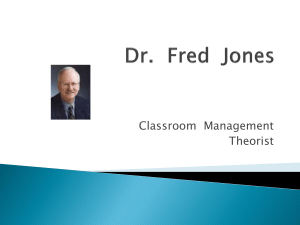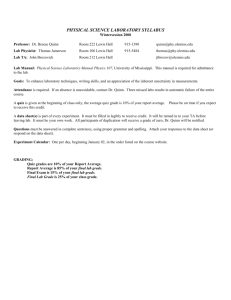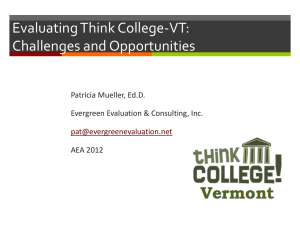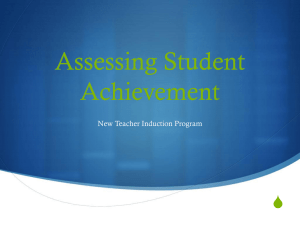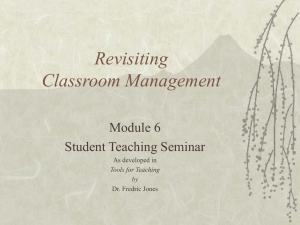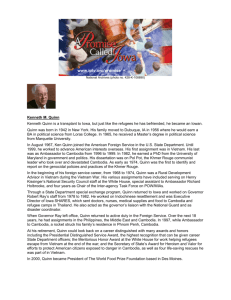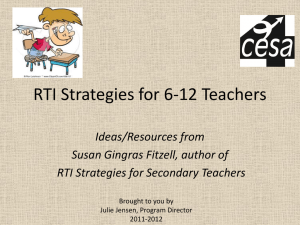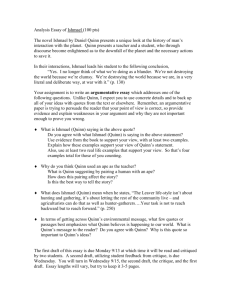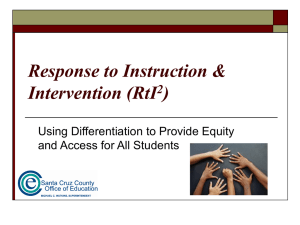PowerPoint for RE Meeting - Year 2
advertisement
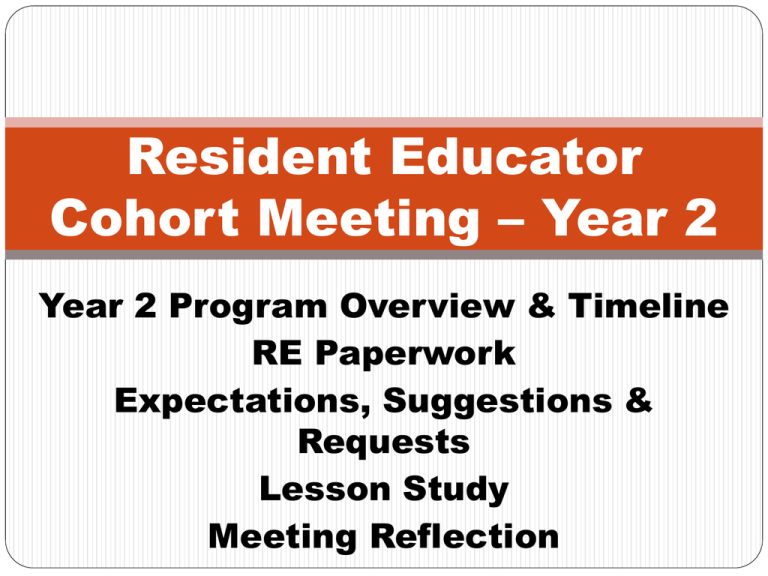
Resident Educator Cohort Meeting – Year 2 Year 2 Program Overview & Timeline RE Paperwork Expectations, Suggestions & Requests Lesson Study Meeting Reflection Welcome Year 2 Resident Educators! Tonight’s Agenda RE paperwork can all be found on Shaker.org: http://shaker.org/StaffTemp.aspx ODE Website: http://education.ohio.gov/Topics/Te aching/Resident-Educator-Program Year 2 Program Overview Major Components of RE Program Self-Assessment & Goal Setting Self-Assessment and Summary 2 SMART goals per year (1 can be Goal #2 from your APG & the other should be based on your Self-Assessment) Teaching & Learning Cycle Assessment for Student Learning Instructional Cycle Observations 1 observation of you by your RE mentor 1 reciprocal observation (with your RE mentor) OR observation of an exemplary teacher* Lesson Study Year 2 Focus: Lesson Design Components & Maximizing Opportunities For Feedback Formative Progress Review Year 2 Timeline Expectations, Suggestions & Requests YOU are responsible for completing all of the components of the RE program – completely and before the end of the school year. How do you feel about a cohort “check-in” meeting/ work session in February? Pace yourself! Don’t try to cram everything in to the beginning, middle, or the end of the school year. Please contact your RE Instructional Mentor or me if you have questions or if you need help. Goal Setting Year 2 Goal Setting Step #1: Complete Year 2 Self- Assessment & Summary (e-mailed to you & online) Step #2: Use your Summary to help you choose one or two “priorities”. Step #3: Write 2 SMART Goals (One of your goals can be Goal 2 from your APG) http://education.ohio.gov/getattachment/Topics/Teaching/Resident-EducatorProgram/Resident-Educator-Mentor-Resources/Goal-Setting-Guide-andTemplates/SMART-Goals.pdf.aspx Step #4: For each SMART Goal, complete “Strategies needed to attain goal” & 4 boxes for “Beginning of the Year”. Step #5: E-Mail your completed Goal Setting Template to your RE mentor for review by November 30th. Lesson Study: Lesson Design Components Maximizing Feedback Opportunities Meet Pat Quinn: “The RTI Guy” Pat Quinn is known nationally as “The RTI Guy” and is the author of the nation’s largest newsletter dedicated specifically to helping teachers implement Response to Intervention. His online training “Response to Intervention Made Easy” has been used by thousands of teachers around the country and his live training events routinely sell out as teachers, counselors, and administrators gather to hear from America’s Best Teacher Trainer! Pat Quinn's newest book Ultimate RTI has been hailed as "the first book that really tells teachers what they are supposed to do to implement RTI". Six Lesson Design Components Pat Quinn’s Six Lesson Design Components 1. Pre-Assess 2. Instruction 3. Check For Understanding 4. Guided Practice 5. Independent Practice 6. Feedback 1. Pre-Assess This step is often skipped! How do you know what your students already know? How do you know if they have the prerequisite skills for your lesson? 20 % of what you’re teaching, students already know. Pre-assess a day or a few days before your lesson. Adjust your lesson plan based on preassessment. 2. Instruction Instruction should be differentiated. Keep in mind the attention span of your students! Median Attention Spans: Kindergartner – 6 minutes 12 Year Old – 9 minutes 12th Grader – 11 minutes Your instruction should consist of 8-9 minute blocks with clear, educational separators between them (i.e. discuss something or do something). 3. Check For Understanding Your check for understanding should be active, not passive. During this time, students should try something and you should go around and check. The focus is on individual accountability – not group data. This is your chance to make an important decision – should you keep working, or should you move on? 4. Guided Practice During this time, your feedback cycle is 60 seconds or less. More time should be spent on guided practice than independent practice. But, as teachers, we often rush this step because of time. Practice does not make perfect, practice makes permanent! 5. Independent Practice During this time, your feedback cycle is within 24 hours. Independent practice should be as short as possible to accomplish your goal. Goal #1 – get faster at something Goal #2 – get better at something Goal #3 – make a skill permanent Independent practice as homework vs. class work 6. Feedback Feedback is what students are doing right, wrong, or need to differently to do better next time. Grading is terrible feedback! If you’re not going to give feedback before the summative assessment, don’t give the assignment! www.4teachers.org Rubistar – Online Rubric Maker PBL Checklists – Online Checklist Maker Maximizing Opportunities For Feedback Meeting Reflection
